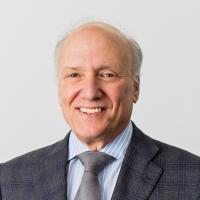Feasibility and Acceptability of a Multidisciplinary Academic Telemedicine System for Memory Care in Response to COVID-19
Neurol Clin Pract. 2022 Dec;12(6):e199-e209. doi: 10.1212/CPJ.0000000000200099.
ABSTRACT
BACKGROUND AND OBJECTIVES: In response to the restrictions imposed by the COVID-19 pandemic, the University of California San Francisco Memory and Aging Center (UCSF MAC) has deployed a comprehensive telemedicine model for the diagnosis and management of Alzheimer disease and related dementias. This review summarizes a large academic behavioral neurology clinic's experience transitioning to telemedicine services, including the impact on clinic care indicators, access metrics, and provider's experience. We compared these outcomes from 3 years before COVID-19 to 12 months after the transition to video teleconferencing (VTC) encounters.
METHODS: Patient demographics and appointment data (dates, visit types, and departments) were extracted from our institution's electronic health record database from January 1, 2017, to May 1, 2021. We present data as descriptive statistics and comparisons using Wilcoxon rank-sum tests and Fisher exact tests. The results of anonymous surveys conducted among the clinic's providers are reported as descriptive findings.
RESULTS: After the implementation of telemedicine services, the proportion of clinic encounters completed via VTC increased from 1.9% to 86.4%. There was a statistically significant decline in both the percentage of scheduled appointments that were canceled (32.9% vs 27.9%; p < 0.01) and total cancelations per month (mean 240.3 vs 179.4/mo; p < 0.01). There was an increase in the percentage of completed scheduled appointments (60.2% vs 64.8%; p < 0.01) and an increase in the average estimated commuting distance patients would need to drive for follow-up appointments (mean 49.8 vs 54.7 miles; p < 0.01). The transition to telemedicine services did not significantly affect the clinic's patient population as measured by age, gender, estimated income, area deprivation index, or self-reported racial/ethnic identity. The results of the provider survey revealed that physicians reported a more positive experience relative to neuropsychologists. Both types of providers reported telemedicine services as a reasonable equivalent and acceptable alternative to in-person evaluations with notable caveats.
DISCUSSION: UCSF MAC's comprehensive integration of telemedicine services maintained critical ambulatory care to patients living with dementia during the COVID-19 pandemic. The recognized benefits of our care model suggest dementia telemedicine may be used as a feasible and equivalent alternative to in-person ambulatory care in the after COVID-19 era.
PMID:36540141 | PMC:PMC9757120 | DOI:10.1212/CPJ.0000000000200099
Authors

Elena Tsoy, PhD
Clinical Neuropsychologist

Melanie Stephens, PhD
Assistant Professor of Neuropsychology

Joel Kramer, PsyD
Professor of Neuropsychology

Bruce Miller, MD
Founding Director, University of California, San Francisco

